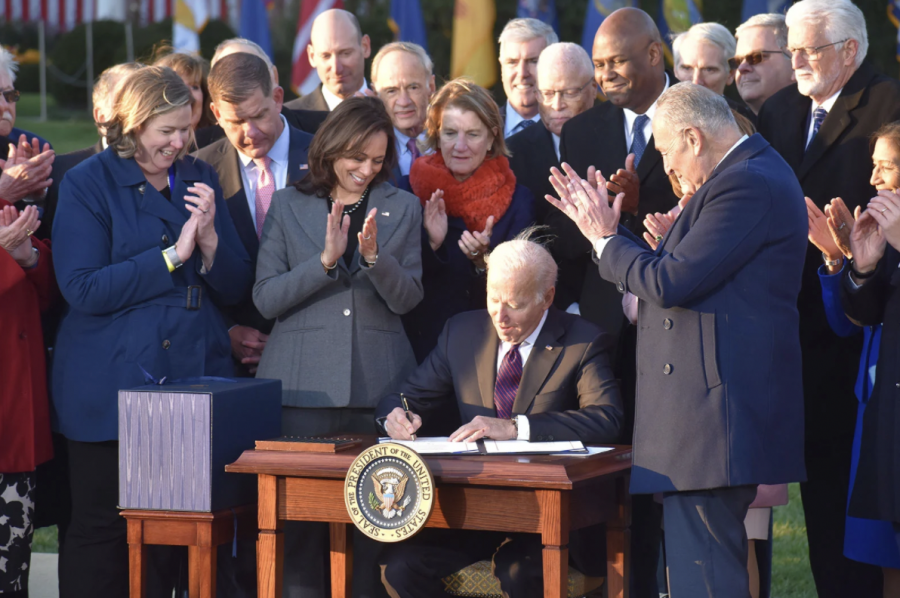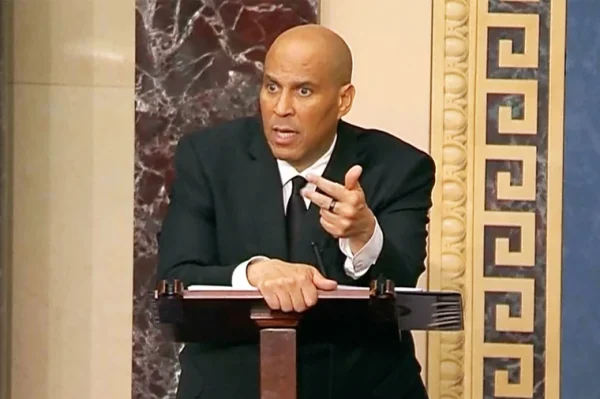Biden Combines Infrastructure with Climate Action in New Plan
On March 31, 2021, in Pittsburgh, Pennsylvania, President Biden revealed “The American Jobs Plan”, presenting it as a “once in a generation investment.” In this plan, Biden lays out the two trillion dollar proposal that will rebuild infrastructure and promote the economy while incorporating historic climate action.
According to the CSIS (Energy Security and Climate Change Program), 768 billion dollars will be invested in buildings, schools, and aged care; 621 billion in transportation; 311 billion in utilities; 593 billion in jobs, manufacturing, and innovation. Out of these expenditures, 2% will go towards climate adaptation, 4% to transition, 6% to environmental justice, 14% in green industrial policy, and 30% for emissions mitigation. Overall, the proposal consists of 50% clean spending, whereas past economic plans consisted of significantly less. For Example, the 2009 Recovery Act (During the Obama administration), designated only 12% to clean spending, and other countries’ plans, such as Japan, Germany, France, or South Korea, included only about 30% of climate-friendly spending.
Focusing specifically on the economic highlights in the package, Biden exclaimed in his announcement that it is the “largest American job investment since World War II, will create millions of jobs, good-paying jobs, will grow the economy, make us more competitive around the world, promote our national security interest [and] put us in the global competition against china in the upcoming year.” With this said, The White House Fact Sheet summarizes the outline of the plan: finances fixing highways, rebuilding bridges, upgrading ports, airports, and transit systems. As well as a focus on sustaining/building more than two million homes and commercial buildings, including modernizing our nation’s schools and child care facilities, and upgrading veterans’ hospitals and federal buildings. Additionally, the plan solidifies the infrastructure of our care economy by creating jobs and raising wages and benefits for essential home care workers. Adding on, it revitalizes manufacturing, secures U.S. supply chains, invests towards R & D (research and development), and trains Americans for the jobs of the future. Furthermore, it will create good-quality jobs that pay prevailing wages in safe and healthy workplaces, and also ensure workers have free and fair access to their rights. Even more, it will retool and revitalize American manufacturers and small businesses. Finally, to support this proposal, the “Made in America Tax Plan” will ensure corporations pay their fair share in taxes and encourage job creation at home. It will be fully paid for in the following fifteen years and deficits will consequently be reduced in the years after. Overall, this outline commits to not only rebuild the economy after the COVID-19 pandemic, but also to reinvent it to promote more sustainable jobs and infrastructure.
Even more monumental, “The American Jobs Plan ” promises to cut greenhouse gases from their peak in 2005 (80% or 6,000 million tonnes of CO2) in half. Using a method that climate activists favor, the plan follows, as coined by the podcast “How to Save a Planet ” labels, the standards, investments, and justice approach. Rather than previous climate action that aims to shift to a carbonless market by making carbon more expensive, the approach tackles standards: rules; where do we want to go or when can we get there, investment: government financing, and lastly, justice: how can we get clean energy for everyone, instead of, as in the past, putting the cost on minorities.
Beginning with the standards stated in “The American Jobs Plan”, it includes a section specifically focused on superpower, a clean electricity standard, which sets a requirement to increase clean electricity by 80% by 2030 (currently at 40%). To achieve this standard, lots of renewables (wind and solar) will be built, however, this does not mean every utility needs to greatly exponentiate their clean energy usage, but rather it’s an average. This allows for all the utilities to start where they’re currently at, and progress from there. Adding on clean electricity power for homes, cars, and production will be incorporated to aim for overall de-carbonization. Furthermore, it ensures clean drinking water for all and the replacement of all lead pipes. By accomplishing these standards alone, we can get halfway to Biden’s 2030 goal.
To support these standards, investments must be poured into new industries to increase clean energy. This involves money that’s already been allocated towards improving the economy, including the 200 billion towards buildings and houses, as well as ten billion towards research and development in clean technology. Additionally, unlike past climate initiatives, like the 2009 bill to limit greenhouse gases, this plan involves a civil society movement. Similar to FDR’s Conservation Corps, to improve natural park infrastructure, The American Jobs plan will put people to work. Beyond that, the largest investment will be put into climate-friendly transportation; 174 billion dollars will go towards the electric vehicle transition and charging infrastructure (the technology is ready), and an additional eighty-five billion dollars to promote the public transition. These investments will secure an easy adjustment to a climate-friendly economy.
The last part, justice: 40% of these investments will go towards disadvantaged communities. Specifically, this will prevent climate technology from supporting the racial wealth gap. In general, this means everyone will have access to clean technology.
Overall, these climate provisions will also support the economy. According to the World’s Resources Institute, “Investing in clean energy can create two to three times more jobs than investing the same amount in fossil fuels”. Therefore, although the climate and the economy are in a fatal state, there is financial gain in incorporating the two to revitalize each. Even more exciting, “The American Jobs Plan”, details exactly how to do so.
Without extreme measures to mitigate climate change, society is looking at a fatal future. According to the USGS (United States Geological Survey), this future entails “a decrease in sea ice and an increase in permafrost thawing, an increase in heat waves and heavy precipitation, and decreased water resources in semi-arid regions”. With these effects, we are facing the threat of having unbreathable air quality by 2050, as well as the natural world as we know it will be devastated, species erased, land masses shrank with the sea level rise, and all in all the population diminished. However, we are not yet past the point of no return, but we are past the point in which individual actions are enough to repair the environment that all of society has destroyed. The solution must be incorporated into a global plan through federal law, a political plan.
If we want to simultaneously improve climate action and the economy, we must get “The American Jobs Plan” underway. Currently, the proposal is held up in congressional meetings, having previously expected to pass in the summer of 2021. To make sure it passes through congress, call your representatives, send letters, spread the word—be a part of the solution.
Hey everyone! My name is Sarah and this is my first year on staff. I’m so excited to be the editor for the sports section and get first-hand experience...







